For most people, the Maya and the Aztec are the best-known Mesoamerican cultures. The area occupied by the Maya included southern Mexico, Guatemala, Honduras, Belize, and El Salvador. The ancient Maya city of Palenque was “discovered” by Europeans in the 1700s. For the next several centuries, European explorers would marvel at the city’s architecture, loot its art, and destroy many of its buildings. Many people were convinced that the city was too complex, too well-built to have been constructed by American Indians, so they assumed that it must have been built by Romans, Egyptians, Greeks, the Lost Tribes of Israel, Europeans, or others. In the twentieth century, some pseudo-scholars, whose works are still promoted by certain television networks, claimed that the builders must have been ancient aliens from distant planets who brought a now-forgotten technology to the Maya.
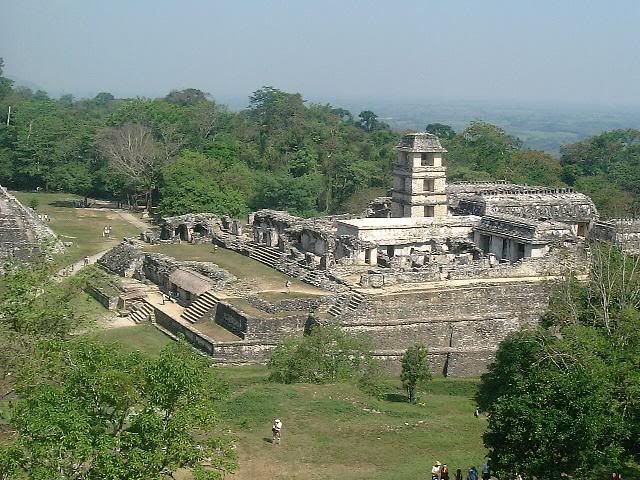
Palenque is best known for its exquisite stone and stucco sculpture, its extensive hieroglyphic texts, and the funerary pyramid of Pakal the Great. For archaeologists it is a site that has also provided a great deal of insight into ancient America, particularly with regard to the ancient gods.
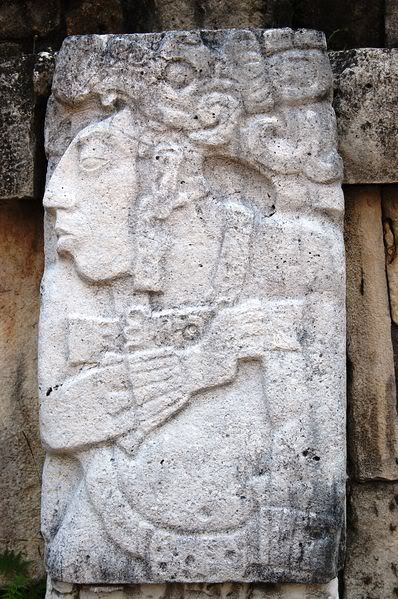
Pakal the Great is shown above.
Today Palenque is an archaeological and a tourist attraction managed by Mexico’s Instituto Nacional de Antropología e Historia.
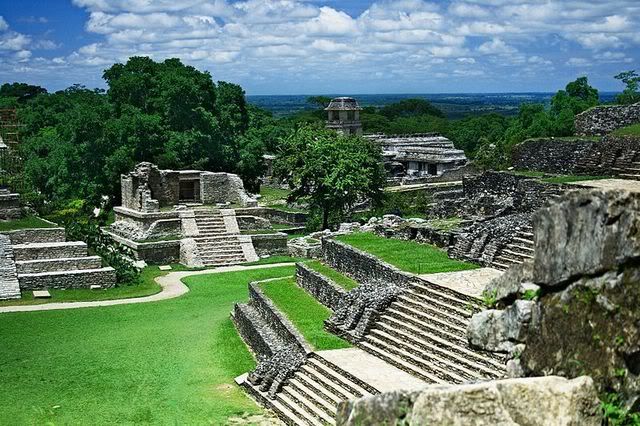
The main plaza at Palenque is shown above.
The Maya:
Archaeologists usually divide Mesoamerican history into three broad time periods: Preclassic (2000 BCE to 250 CE), Classic (250 to 900), and Postclassic (900 to 1500). During the Classic Period, the Maya were divided into many small kingdoms centered around cities. The largest of these cities-Calakmul, Tikal, Cobá, and Caracol-had populations of more than 75,000 and served as regional centers for powerful kings and queens and their royal courts.
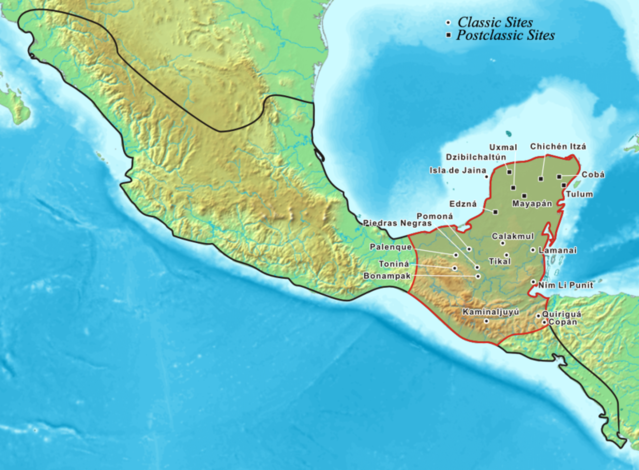
The various Classic Maya kingdoms not only traded among themselves, but also waged war on one another. In addition, they traded with non-Maya kingdoms, such as Teotihuacán and also waged war against non-Maya kingdoms.
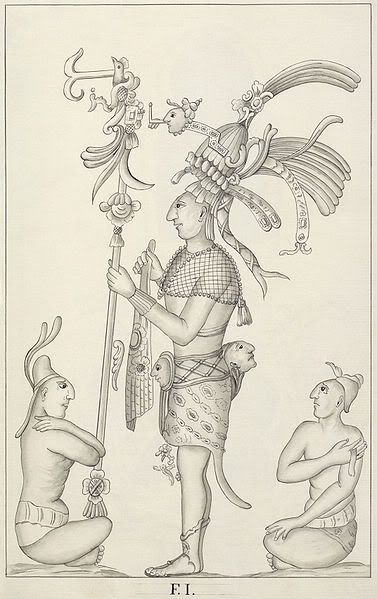
Palenque:
The ancient Maya city of Palenque has an urban core which is slightly larger than the Principality of Monaco. Archaeologists have noted the remains of some 1,500 structures within this core clustered into at least 35 major building complexes. Like other Maya cities, Palenque shows that the ancient Maya carefully managed their water supplies: there are stone aqueducts and walled stream banks. The area is characterized by fluctuations in dry and wet seasons and the maintenance of an adequate water supply throughout the year was critical to urban life.
As with other Maya cities, the primary building material was stone. At Palenque, the masons had available to them limestone that was as dense and flawless as fine lithographic stone. The stones in the Palenque area have natural cleavage planes which mean that it was easy to break into great slabs. The Maya masons used these stones to produce buildings of great beauty and Maya artists and scribes used them to produce panels with hieroglyphic texts and scenes of Maya life.
Palenque was initially settled about 500 BCE and had grown into a small city by 400 CE. By 850 CE, the city was largely abandoned. The last known date recorded at Palenque is 799.
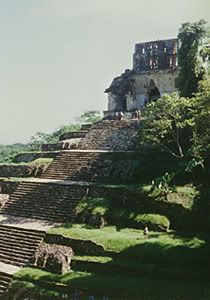

The Kings of Palenque:
The Maya cities were ruled by kings and the kingship was usually passed down through the male line, from father to son. Palenque is famous in the archaeological world because it contains the first Maya royal tomb ever excavated. At one time it was thought that the Maya stepped-pyramids served solely as platforms for temples. At Palenque, however, archaeologists found the intact tomb of Palenque’s greatest king inside a pyramid. This was the tomb of K’inish Janab Pakal, or simply Pakal.
One of the interesting anomalies in Palenque occurred with the death king Kan Bahlam in 583. Royal descent traditionally passed from father to son, but in this case the person who assumed the throne, Ix Yohl Ik’nal, was a woman. While some people assume that she was the daughter of Kan Bahlam, there is no actual evidence of this. During her reign, in 599, Palenque was defeated militarily by Calakmul, another Mayan kingdom. At this time, the Palenque Triad gods were “thrown down” and the Great Jaguar, the militaristic totem of the Calakmul kings, appears.
In 615, the twelve-year-old K’inich Janab Pakal assumed the throne of Palenque and went on to become its longest and greatest ruler. His father was K’an Hix Mo’ (Yellow Jaguar Macaw) who may have been a noble of foreign origin. There is no indication that his father ever occupied the throne of Palenque. The origins of his mother, Ix Sak K’uk’ (Lady White Quetzal), are also obscure, but during her son’s reign she became a powerful figure. There are some scholars who feel that Pakal was installed on the throne by the king of Calakmul to rule as a puppet.
The last known king of Palenque was K’inich K’uk’ Bahlam whose reign began on 8 March 764 and lasted for at least 20 years. There is, however, a vase which suggests that Six Death Janab Pakal was inaugurated on 17 November 1799. Little is known about this person who may have been Palenque’s last king.
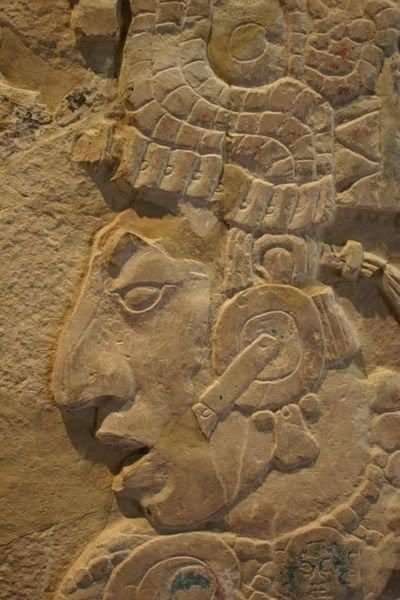
The Gods of Palenque:
Palenque provides us with some insights into Maya religion. First, a caution: we should not assume that there was a single religious tradition among the Maya. As with many other parts of the world, including ancient Egypt, the gods were associated with specific places. Thus the gods of Palenque should be considered just that: the gods of Palenque, not universal Maya gods.
Religious expression at Palenque focused on the Triad: three gods which were hierarchically arranged from most-to-least important and each of which had their own temple. These three gods were the creation of another god, known today as the Triad Progenitor who was born in 3121 BCE and who is considered a maize god.
Just prior to Pakal’s rule, the Triad had been thrown down, and during his rule there was a political and religious renaissance in which the Triad rituals were reinstated. During the rule of Pakal’s son, Ki’inich Kan Bahlam, the three temples of the Triad were constructed and made more opulent and impressive than before. All three of the temples currently designated as the Cross Group were dedicated on the same day: 10 January 692. At this dedication, according to the inscriptions, the three patron gods of the Palenque dynasty were housed in their respective shrines. The dedication was timed to coincide with the completion of the thirteenth K’atun: 9.13.0.0 in the Maya calendar. The thirteenth K’atun was special in its own right as the number 13 is sacred in Maya numerology.
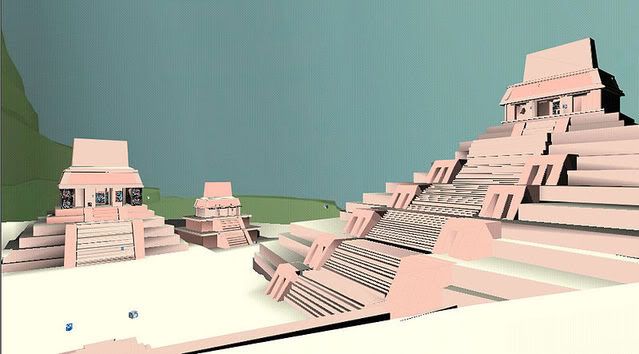
A reconstruction of the temples of the Cross Group is shown above.
God 1 (often designed as G1) was the most important of the Triad. His actual name is obscure, but he was born in the mythical realm of Matwiil on 21 October 2360 BCE. His shrine at Palenque is currently designated as the Temple of the Cross. He was an aquatic deity with associations with the sun. He was associated with the east. Near the time of Maya creation, he descended from the sky and lived in a northern temple known as Six Heaven. The Temple of the Cross is the sky temple which is associated with solar re-birth and with the ancestral authority of rulership.
The great cross shown in the temple, and from which Europeans have given the temple its name, is not a European religious symbol, but rather is a representation of a sacred world tree. On top of this tree sits an elaborate supernatural bird.
God 2 (often designated as G2), whose name is Unen K’awiil, was born on 8 November 2360 BCE and is thus the youngest of the Triad though second in power. He was the god of lightning and was seen as a manifestation of royal power and agriculture. His temple at Palenque is currently designated as the Temple of the Foliated Cross. One of his titles was the Young Lord of the Five Heavenly Houses. The Temple of the Foliated Cross represented the middle place where maize agriculture and water meet. It also symbolizes the procreative powers of the king.
God 3 (often designated as G3), the most junior member of the Triad (in terms of importance), was born on 25 October 2360 BCE. He was associated with the sun and was often seen as a warrior. His temple at Palenque is currently known as the Temple of the Sun. Within the Temple of the Sun is the depiction of a cave within the earth which houses the solar god associated with warfare and military authority. The symbol of this temple of sacred warfare is the crossed spears and the shield.
The Triad gods provided a model of kingship for Palenque. They established a mythical charter for how the kings were to interact with the gods. It was the kings who were entrusted with the care and protection of these gods.
At the K’atun (the celebration of the twenty year cycle of the Maya calendar) the gods of the Triad were dressed by the king and given proper offerings. It was the duty of the king to give them ornaments and ritual clothing. This aspect of the veneration of the Triad, seen as a form of caretaking, was extremely important to the Maya. A number of scholars have noted that the dressing rituals described in the Palenque texts are very similar to today’s rituals in the region in which the images of the Catholic saints are dressed in native ceremonial dress and given necklaces of gold coins.
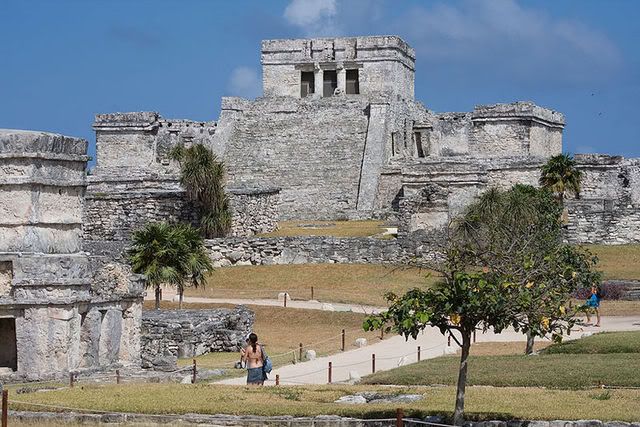

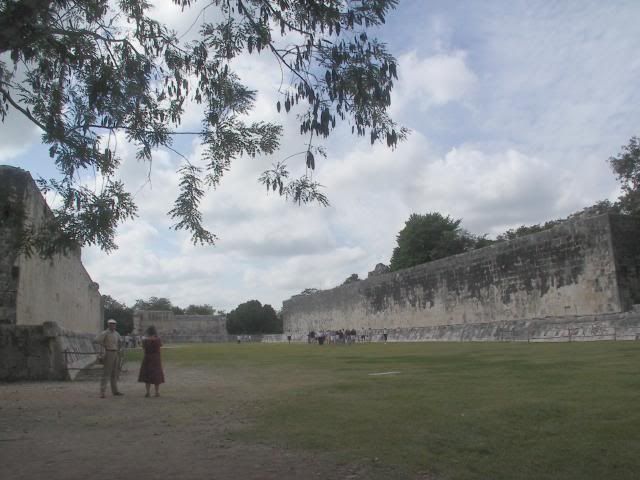

Leave a Reply